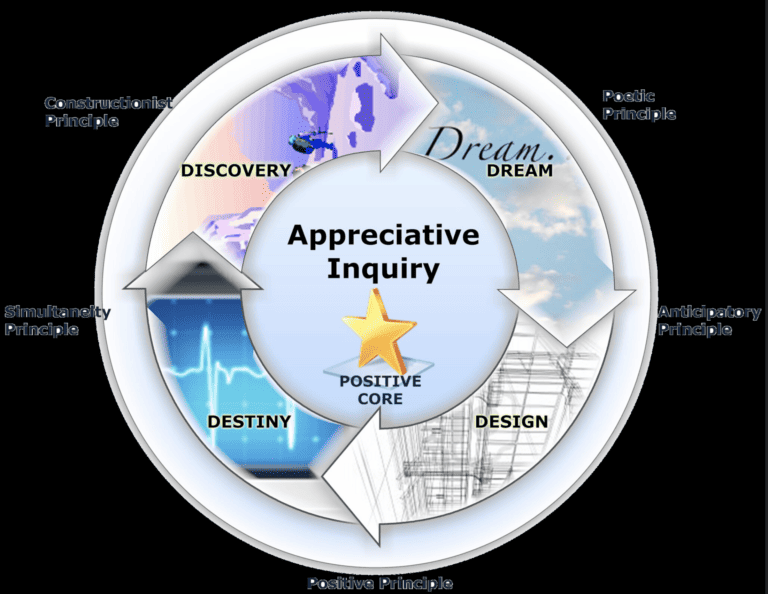The Art of Giving and Receiving Feedback Constructively
In professional environments, the exchange of feedback is an integral part of personal and organizational growth. However, the process of giving and receiving feedback constructively is often undervalued and misunderstood. It requires a delicate balance of empathy, clarity, and effective communication skills.
Understanding the intricacies of providing feedback that inspires growth and receiving feedback with openness and a growth mindset is essential for personal and professional development. Furthermore, the ability to navigate challenging feedback scenarios and cultivate a feedback-friendly environment is crucial for fostering a culture of continuous improvement.
As we explore the art of giving and receiving feedback constructively, we uncover the transformative power it holds for individuals and organizations alike.
Key Takeaways
- Feedback serves as a tool for guidance, support, and direction.
- Constructive criticism focuses on specific behaviors or actions.
- Embracing a growth mindset fosters continuous improvement and adaptability.
- Effective communication is crucial in professional settings.
Understanding the Purpose of Feedback
Understanding the purpose of feedback is essential for fostering growth and improvement in both individuals and organizations. Feedback serves as a tool for providing guidance, support, and direction to help individuals and teams enhance their performance. It is crucial to understand that the purpose of feedback is not just to point out areas for improvement but also to recognize strengths and accomplishments.
Effective delivery of feedback involves clear communication, specific examples, and constructive suggestions for development. It is essential to provide feedback in a manner that is conducive to learning and growth, promoting a positive and open environment for discussion.
Receiving feedback with openness is equally important. It requires individuals to approach feedback with a willingness to listen, reflect, and act upon the insights provided. Managing reactions to feedback is a skill that can be developed through self-awareness and a focus on growth. It is natural to have emotional responses to feedback, but learning to manage these reactions constructively is key to leveraging the benefits of feedback for personal and professional development.
Understanding the purpose of feedback and mastering the art of its delivery and reception are fundamental to fostering a culture of continuous improvement and success.
Providing Constructive Criticism
While offering feedback, it is essential to provide constructive criticism that focuses on specific behaviors or actions rather than generalities. Constructive feedback aims to guide individuals towards improvement, making it crucial in the performance evaluation process.
When delivering constructive criticism, it is important to address the behavior or action that needs improvement with clarity and specificity. Vague or general feedback can leave individuals unsure of what exactly needs to be changed or improved. Therefore, when providing constructive criticism, it is beneficial to cite specific examples or instances where the behavior or action occurred. By doing so, the recipient of the feedback can better understand the context and make necessary adjustments.
Additionally, it is important to offer actionable suggestions for improvement rather than just pointing out flaws. This approach not only highlights areas for development but also provides a clear path for the individual to enhance their performance.
Ultimately, constructive criticism should be delivered with the intention of fostering growth and improvement, making it an integral part of the feedback process.
Receiving Feedback With Openness
In order to receive feedback with openness, it is crucial to cultivate open-mindedness and embrace diverse perspectives.
This entails being receptive to different viewpoints and remaining open to learning and growth.
Cultivating Open-Mindedness
How can we approach feedback with a mindset that encourages open-mindedness and growth? Cultivating open-mindedness is essential for receiving feedback constructively. Here are three key ways to foster open-mindedness and growth when receiving feedback:
- Embrace Emotional Intelligence: Recognize and manage your emotions when receiving feedback. Cultivating emotional intelligence allows you to approach feedback with a calm and open mindset, enabling you to process the information effectively.
- Foster Self-Awareness: Understand your strengths and weaknesses. Being self-aware allows you to approach feedback with an open mind, acknowledging areas for improvement without feeling defensive.
- Engage Critical Thinking: Evaluate feedback thoughtfully. Apply critical thinking skills to assess the feedback received, considering its validity and how it can contribute to your growth.
Embracing Diverse Perspectives
To extend the mindset of open-mindedness cultivated in feedback reception, the embracement of diverse perspectives becomes paramount for fostering a culture of constructive feedback exchange.
Embracing diverse perspectives involves acknowledging and valuing the different viewpoints, backgrounds, and experiences that individuals bring to the table. It requires a willingness to listen, understand, and learn from perspectives that may differ from our own.
By embracing diverse perspectives, individuals can engage in constructive dialogue that enriches the feedback process. It allows for the exploration of new ideas, the identification of blind spots, and the promotion of inclusivity within the feedback exchange.
Embracing diverse perspectives also contributes to the development of a more comprehensive understanding of the feedback received, leading to more thoughtful and well-rounded insights for improvement.
Embracing a Growth Mindset
Embracing a growth mindset is essential for individuals and organizations to foster a culture of continuous improvement and adaptability. A growth mindset encourages the belief that talents and abilities can be developed through dedication and hard work, leading to the enhancement of skills and knowledge.
To embrace a growth mindset, individuals and organizations can:
- Seek Feedback and Learning Opportunities: Actively seeking feedback and viewing it as an opportunity for growth can help individuals and organizations identify areas for improvement and development, fostering a culture of continuous learning and positive reinforcement.
- Embrace Challenges: Embracing challenges as opportunities to learn and grow, rather than avoiding them, can foster resilience and a willingness to take on new and difficult tasks, ultimately leading to personal and professional development.
- Celebrate Effort and Progress: Recognizing and celebrating the effort and progress made, rather than solely focusing on the end result, can promote a positive mindset and reinforce the idea that dedication and hard work are essential components of growth and success.
Effective Communication Strategies
Effective communication strategies play a crucial role in establishing clear and productive interactions within a professional setting.
Active listening is a fundamental skill that contributes to effective communication. It involves fully concentrating, understanding, responding, and remembering what is being said. By actively listening, individuals show respect and interest in the speaker, fostering a positive and constructive environment for communication.
Additionally, providing an empathetic response is essential in demonstrating understanding and validation of the speaker's feelings and thoughts.
Understanding nonverbal cues, such as body language and facial expressions, is equally important in effective communication. These cues often convey emotions and attitudes that may not be expressed through words, allowing individuals to accurately interpret the underlying message.
Furthermore, assertive communication is vital for expressing one's thoughts and feelings in a clear, direct, and respectful manner. It enables individuals to communicate their needs and boundaries effectively, fostering open and honest dialogue.
Managing Emotional Reactions
When faced with emotional reactions in a professional setting, it is important to approach them with composure and understanding to maintain a productive and harmonious environment. Managing emotions and building resilience are essential skills in handling emotional reactions constructively.
Here are three key strategies for managing emotional reactions in a professional setting:
- Self-awareness: Recognize your own emotional triggers and be mindful of your emotional state before addressing someone else's emotional reaction. Understanding your own emotions can help you respond in a more composed and empathetic manner.
- Active listening: When someone expresses strong emotions, practice active listening to understand their perspective fully. Show empathy and validate their feelings to create a supportive environment for effective communication.
- Empowerment through resilience: Encourage the development of resilience in yourself and others. Resilience enables individuals to bounce back from emotional setbacks and challenges, fostering a more positive and proactive approach to managing emotional reactions in the workplace.
Implementing Feedback for Improvement
Now that we've explored the importance of managing emotional reactions to feedback, it's crucial to shift our focus to implementing feedback for improvement.
This involves understanding how to use feedback as a tool for growth and progress. We'll address the key points of improvement through feedback and the practical application of constructive criticism.
Improvement Through Feedback
Receiving constructive feedback is a critical component of personal and professional growth, providing valuable insights and opportunities for improvement. Implementing feedback for improvement involves creating a feedback culture that fosters continuous learning and development.
Improvement through feedback can be achieved by:
- Enhancing Performance: Constructive feedback helps individuals identify areas for improvement and develop strategies to enhance their performance, ultimately leading to personal and professional growth.
- Fostering a Feedback Loop: Establishing a feedback loop encourages ongoing communication, ensuring that feedback is received, acknowledged, and acted upon, creating a culture of continuous improvement.
- Promoting Constructive Dialogue: Encouraging open and constructive dialogue allows for effective exchange of feedback, leading to enhanced collaboration, innovation, and growth within personal and professional contexts.
Applying Constructive Criticism
Implementing feedback for improvement requires a thoughtful and objective approach to applying constructive criticism in both personal and professional settings. When applying feedback, it's crucial to engage in constructive dialogue that focuses on specific behaviors or actions rather than making personal attacks. This approach helps in creating a supportive and growth-oriented environment. Here's a table that highlights key aspects of applying constructive criticism:
| Dos | Don'ts |
|---|---|
| Be specific | Use vague language |
| Offer solutions | Focus only on problems |
| Use a positive tone | Criticize the person |
| Encourage improvement | Discourage or demotivate |
Navigating Challenging Feedback Scenarios
Facing challenging feedback scenarios can be a daunting yet essential aspect of professional growth and development. When navigating emotions and handling resistance in such scenarios, it's crucial to approach them with a constructive mindset. Here are three key strategies to effectively navigate challenging feedback scenarios:
- Practice Active Listening: When receiving challenging feedback, it's natural to experience a range of emotions, including defensiveness or frustration. However, actively listening to the feedback without interrupting allows for a deeper understanding of the concerns being raised. This approach can help in managing emotional reactions and responding thoughtfully.
- Seek Clarification: Instead of immediately reacting to challenging feedback, seek clarification to ensure a comprehensive understanding of the issues raised. This not only demonstrates a willingness to engage with the feedback but also provides an opportunity to address any misunderstandings or misinterpretations.
- Focus on Solutions: Rather than dwelling on the emotional aspects of challenging feedback, shift the focus towards finding constructive solutions. This approach can help in mitigating resistance and turning the feedback into actionable steps for improvement.
Cultivating a Feedback-Friendly Environment
Creating a culture of open communication and constructive feedback is essential for fostering a feedback-friendly environment within any organization. This involves creating trust, building rapport, encouraging participation, and fostering collaboration among team members. One effective way to achieve this is by implementing a feedback-friendly environment that promotes open and honest communication. When team members feel comfortable providing and receiving feedback, it can lead to increased trust and stronger working relationships. Encouraging participation from all team members, regardless of their position or seniority, is also crucial in cultivating a feedback-friendly environment. This inclusivity can help foster collaboration and create a sense of unity within the organization.
| Key Strategies for Cultivating a Feedback-Friendly Environment | ||
|---|---|---|
| Creating Trust | Building Rapport | Encouraging Participation |
| Fostering Collaboration |
Implementing these strategies can contribute to a workplace culture where feedback is valued and seen as an opportunity for growth and improvement. By fostering a feedback-friendly environment, organizations can enhance communication, teamwork, and overall performance.
Conclusion
In conclusion, the art of giving and receiving constructive feedback fosters growth and development in all endeavors.
Cultivating a feedback-friendly environment creates a culture of continuous improvement. Effective communication strategies and managing emotional reactions are essential for navigating challenging feedback scenarios.
Embracing a growth mindset and implementing feedback for improvement are crucial components for success. Understanding the purpose of feedback and providing constructive criticism are key to fostering a culture of constructive feedback.







